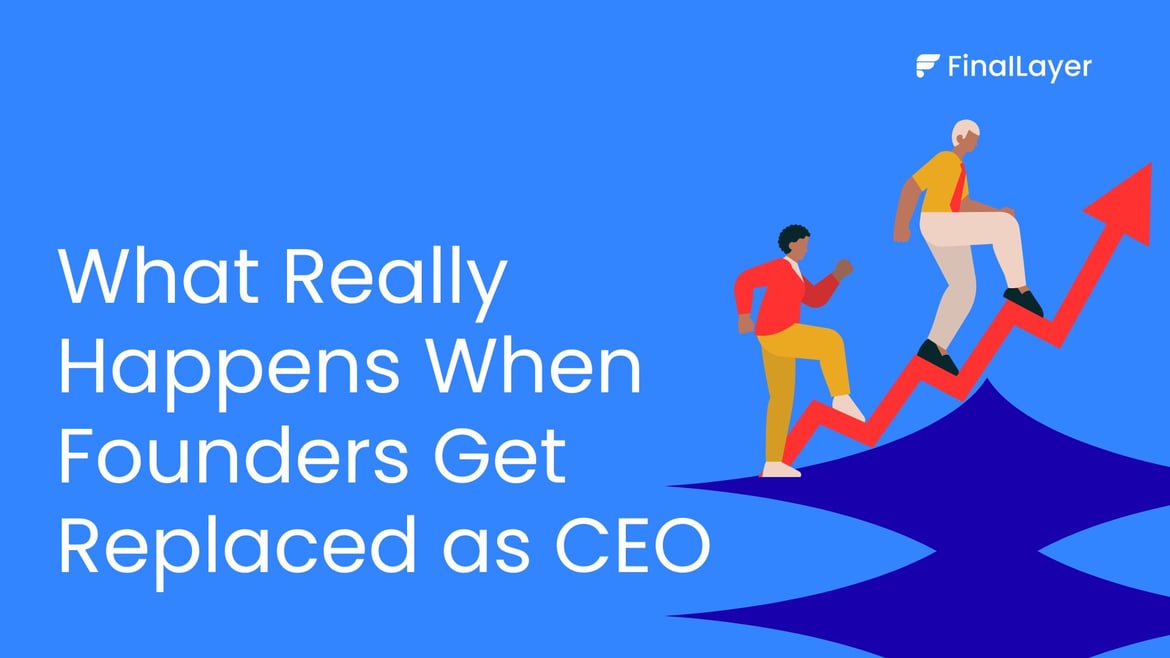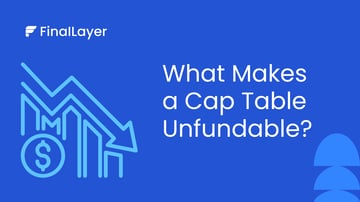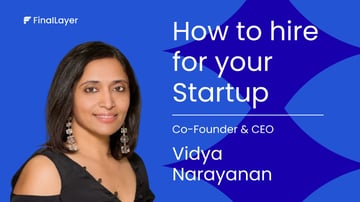I'm a founder who got replaced as CEO last year. After numerous questions from the community, I'm sharing the real story of what happens when founders lose control of their companies and why we're building FinalLayer differently.
How Founders Lose Control
It's not uncommon for founders to no longer have the majority stake after raising significant capital. By Series C, the average founder ownership is between 15 and 25 percent, and we were a post Series C company.
Also by Series C, it's typical for founders to be outnumbered on the board if there are only two co-founders. The math is simple: you don't have the votes to protect yourself.
The Financial Reality: No Golden Parachute
Did I walk away with cash? Absolutely not. Here's what actually happened:
- Five years working at zero salary
- Five years at 30 percent of market pay
- Lost all equity upon departure
Soon after we left, the board executed a 10-to-1 reverse stock split, erasing practically all the equity we had built over a decade.
After the reverse stock split, they issued new equity to the incoming team, ensuring that whatever remained was diluted to nothing. We also lost all preferred shares we owned from personal capital invested as founders. I prefer not to calculate the total loss because it would keep me up at night.
The Board Politics
I remained on the board briefly after stepping down as CEO, serving as the common shareholder representative. They lacked legal authority to remove me immediately.
Their solution? Stop holding official board meetings entirely. Instead, they conducted business through private meetings with individual board members. For my mental health, I eventually resigned from the board.
What Happens to Companies After Founders Leave
The company still exists, though I have limited visibility into current operations. The aftermath was predictable:
- Most senior leadership departed
- Nearly the entire engineering team resigned
- Reports suggest significant operational chaos
This pattern is common when founders are forced out. The people who believed in the original vision often follow. In fact, many of these talented individuals are now part of the FinalLayer team.
Could This Have Been Prevented?
Not really. We had a board unwilling to take accountability for structural problems. Despite raising $60 million in venture capital during my tenure as CEO, the cap table structure made raising new rounds impossible.
We had what's called an unfundable cap table. Existing investor terms made it impossible to attract new investment. Rather than acknowledge this structural issue, the board blamed founder performance.
The Unfundable Cap Table Problem
While I successfully raised $60 million throughout our journey, the cap table structure created by early investors made future funding impossible. New investors wouldn't touch us, not because of performance, but because of deal terms that made their potential returns unviable.
This is a critical lesson we're applying at FinalLayer: how you structure early rounds can doom your company years later, regardless of execution.
Building FinalLayer: The Next Chapter
I'm now building FinalLayer with the same co-founder and many team members from our previous company. These are people who saw what really happened and chose to continue the journey with us.
At FinalLayer, we're helping professionals build and maintain their online presence, starting with LinkedIn. We've already hit 10,000 users who trust us to help them stay visible and engaged professionally without the time commitment. We're expanding to additional platforms soon.
This time, we're building with the lessons learned: sustainable growth, aligned incentives, and always keeping founder and team interests protected.
Lessons in Resilience
Am I bitter? No. Am I in therapy? No. I'm actually doing well and excited about what we're building at FinalLayer.
Entrepreneurship teaches you that bad things happen, but what matters is taking the next step forward. The grit and resilience you develop become your greatest assets. I'm sharing these lessons hoping they'll help other founders navigate similar challenges and perhaps inspire them to keep building despite setbacks.
Key Takeaways for Founders
The reality of venture-backed startups is harsh. Boards can act against founder interests, equity can vanish through financial engineering, and years of work can disappear without compensation. But the relationships you build and the resilience you develop are yours to keep.
Understanding these risks upfront helps you make better decisions about fundraising, board composition, and protecting founder interests. Most importantly, it reminds you that your worth as an entrepreneur isn't tied to a single company's outcome.
At FinalLayer, we're applying these hard-won lessons to build something sustainable and valuable, not just for investors, but for our team and the professionals we serve. Sometimes the best companies come from founders who've learned what not to do.
Moving Forward
If you're a founder facing similar challenges, remember: your journey doesn't end with one company. The team members who believe in you, the lessons you've learned, and the resilience you've built are the foundation for whatever comes next.
For us, that next chapter is FinalLayer, and we're just getting started.



